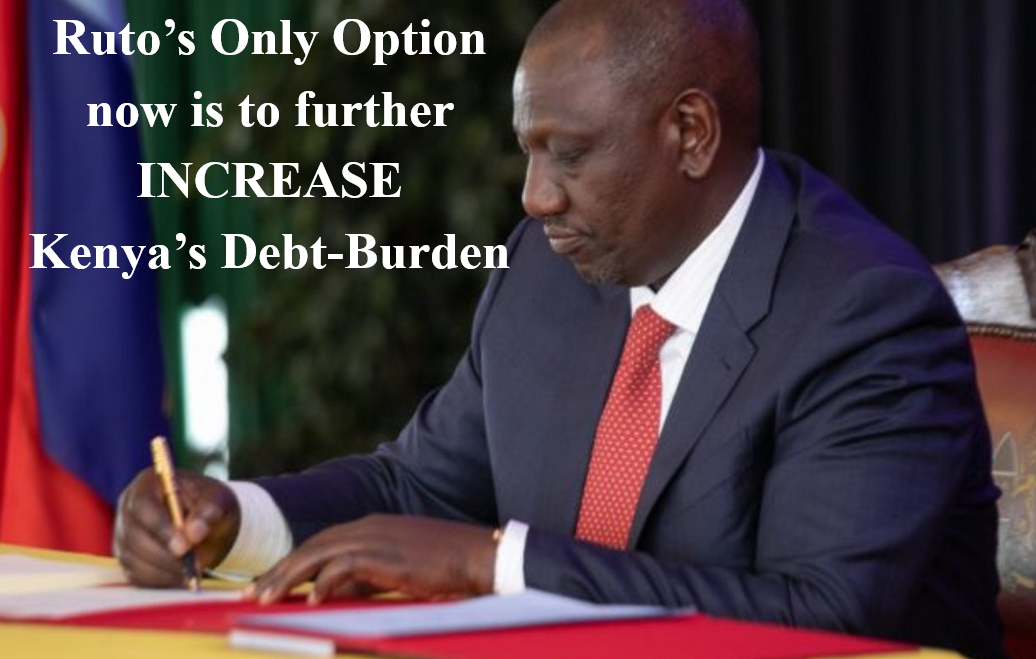Kenya To Borrow Extra Sh 169 Billion After Cutting Budget
Post By Diaspoint | July 6, 2024

One disheartening aspect of African leadership failures in the direction foreign debts is the persist borrowing for purpose of filling budget-gap
Government of Kenya intends to borrow more money to fill the budget gap resulting from President William Ruto’s repeal of the Finance Bill 2024, which was supposed to produce Sh346 billion in additional taxes.
Addressing the nation on Friday, the Head of State declared that the state will borrow Sh169 billion and reduce government spending by Sh177 billion to close the budget deficit for the fiscal year 2024-2025.
This, he said, is critical in allowing his administration to hire junior secondary school (JSS), teachers and medical interns, restart stalled road projects, maintain fertilizer subsidy programs, enable government-owned sugar companies to pay farmers’ outstanding debts, and settle the coffee sector debts in constituencies and counties.
President Ruto has warned, however, that repealing the Bill will slightly increase the government’s fiscal deficit to 4.6 percent of GDP, up from a previous objective of 3.3 percent of GDP in fiscal year 2024-25.
“Cutting the entire amount would significantly and entirely alter the delivery of critical government services, while borrowing the whole amount in full would occasion a fiscal deficit by a margin of Sh346 billion that would have a significant repercussion on many sectors, including our exchange rate and interest rate,” said President Ruto.
“We have since, after extensive consultations, struck a middle ground, and we will be proposing to the national assembly a budget cut of not the entire Sh346 billion but a budget cut of Sh177 billion and borrowing the difference,” added the Head of State.
Following the budget shrink, he announced that 47 state organizations with overlapping and duplicating functions would be disbanded, with impacted personnel seconded to overlaying ministries and other government bodies.
Read More from original source
